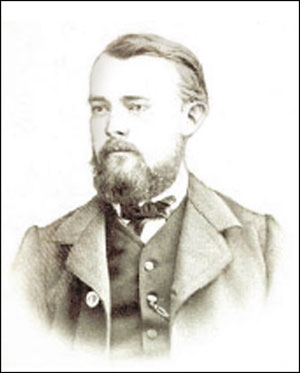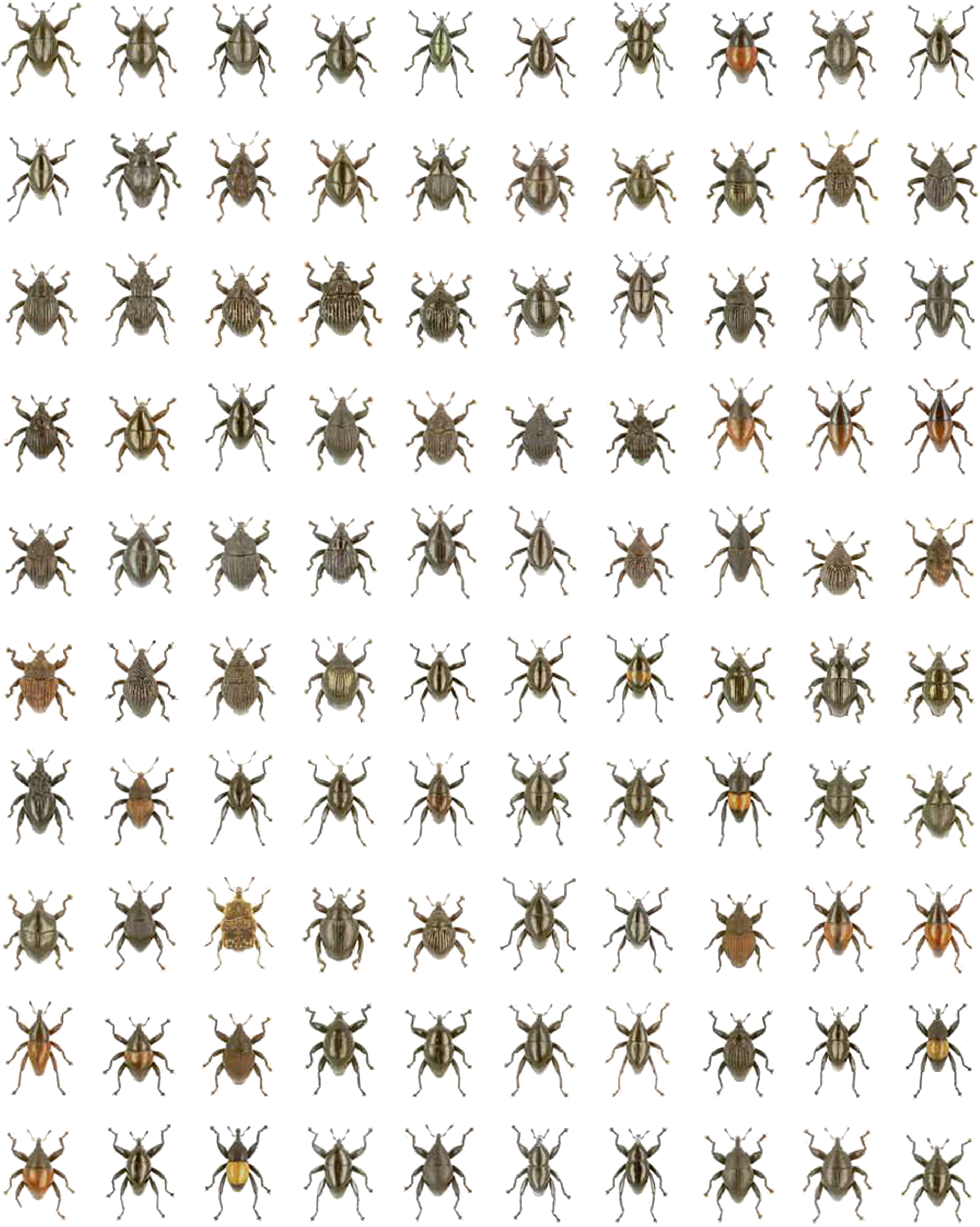|
Novitates Entomologicae
''Novitates Entomologicae'' was a French entomological journal. It was published by Eugène Le Moult and established in 1931. Production The size of the publication was very large: 25 × 33 cm, recalling something like the publications of Émile Deyrolle. Authors These are mainly Le Moult himself on Lepidoptera and Coleoptera, (A.) Thierry on Buprestidae, P. Basilewsky on Carabidae and Stephan von Breuning on Cerambycidae. Main works The best known works are those of Le Moult on the genus '' |
Entomology
Entomology () is the science, scientific study of insects, a branch of zoology. In the past the term "insect" was less specific, and historically the definition of entomology would also include the study of animals in other arthropod groups, such as arachnids, myriapods, and crustaceans. This wider meaning may still be encountered in informal use. Like several of the other fields that are categorized within zoology, entomology is a taxon-based category; any form of scientific study in which there is a focus on insect-related inquiries is, by definition, entomology. Entomology therefore overlaps with a cross-section of topics as diverse as molecular genetics, behavior, neuroscience, biomechanics, biochemistry, systematics, physiology, developmental biology, ecology, morphology (biology), morphology, and paleontology. Over 1.3 million insect species have been described, more than two-thirds of all known species. Some insect species date back to around 400 million years ago. Th ... [...More Info...] [...Related Items...] OR: [Wikipedia] [Google] [Baidu] |
Eugène Le Moult
Eugène Le Moult (31 December 1882, Quimper – 26 January 1967, Paris) was a French naturalist and entomologist specialised in butterflies; hunter, businessman and collector. Le Moult grew up in the tropical prison colony of French Guiana, where his cash-strapped organic-farmer father had taken a post to develop the road network. Here the adolescent discovered the beauty of the area's ''Morpho'' butterflies, and set about hunting and selling them to mainland France. French Guiana's only butterfly exporter from 1903 to 1920, Le Moult turned his business into the country's third largest industry, after gold and precious woods. To enlarge his collection he started to recruit hunters. In Guyana, at the time, the question of labour was simple: you had to use convicts. Therefore, for those men in "striped shirts", hunting butterflies became the prize for good conduct. The Steve McQueen/Dustin Hoffman movie '' Papillon'' references this. Three years after moving back to Paris in 190 ... [...More Info...] [...Related Items...] OR: [Wikipedia] [Google] [Baidu] |
Émile Deyrolle
Émile Deyrolle (1838–1917) was a French naturalist and natural history dealer in Paris. The business was originally owned by his naturalist grandfather, Jean-Baptiste Deyrolle who opened his shop in 1831 at 23, Rue de la Monnaie. Émile’s father Achille Deyrolle ran the business for many years. Émile took over in 1866. The address from 1881 (and now) was (and is) 46, Rue du Bac, the former home of Jacques Samuel Bernhart. Deyrolle specialized in natural history publications and specimens taxidermy, minerals, rocks, fossils, botanical specimens, shells, taxidermy, microscopic specimens and microscopes. References *Jacques-Marie-Frangile Bigot Jacques Marie Frangile Bigot (1818–1893) was a French naturalist and entomologist most noted for his studies of Diptera. Bigot was born in Paris, France, where he lived all his life, though he had a small house in Quincy-sous-Sénart, Essonne. H ... 1868 ''Guide de l'amateur d'insectes : comprenant les généralités sur leu ... [...More Info...] [...Related Items...] OR: [Wikipedia] [Google] [Baidu] |
Buprestidae
Buprestidae is a family of beetles known as jewel beetles or metallic wood-boring beetles because of their glossy iridescent colors. Larvae of this family are known as flatheaded borers. The family is among the largest of the beetles, with some 15,500 species known in 775 genera. In addition, almost 100 fossil species have been described. The larger and more spectacularly colored jewel beetles are highly prized by insect collectors. The elytra of some Buprestidae species have been traditionally used in beetlewing jewellery and decoration in certain countries in Asia, like India, Thailand and Japan. Description and ecology Shape is generally cylindrical or elongate to ovoid, with lengths ranging from , although most species are under . ''Catoxantha'', '' Chrysaspis'', ''Euchroma'' and ''Megaloxantha'' contain the largest species. A variety of bright colors are known, often in complicated patterns. The iridescence common to these beetles is not due to pigments in the exoskeleton, ... [...More Info...] [...Related Items...] OR: [Wikipedia] [Google] [Baidu] |
Carabidae
Ground beetles are a large, cosmopolitan family of beetles, the Carabidae, with more than 40,000 species worldwide, around 2,000 of which are found in North America and 2,700 in Europe. As of 2015, it is one of the 10 most species-rich animal families. They belong to the Adephaga. Members of the family are primarily carnivorous, but some members are phytophagous or omnivorous. Description and ecology Although their body shapes and coloring vary somewhat, most are shiny black or metallic and have ridged wing covers (elytra). The elytra are fused in some species, particularly the large Carabinae, rendering the beetles unable to fly. The species ''Mormolyce phyllodes'' is known as violin beetle due to their peculiarly shaped elytra. All carabids except the quite primitive flanged bombardier beetles (Paussinae) have a groove on their fore leg tibiae bearing a comb of hairs used for cleaning their antennae. Defensive secretions Typical for the ancient beetle suborder Adephaga to ... [...More Info...] [...Related Items...] OR: [Wikipedia] [Google] [Baidu] |
Stephan Von Breuning (entomologist)
Stephan von Breuning (21 November 1894 – 11 March 1983) was an Austrian entomologist who specialised in the study of beetles (coleopterology), particularly within the longhorn family (Cerambycidae). Career An amateur working on the rich collections of the Muséum national d'Histoire naturelle, he described 7894 taxa of Cerambycidae. Works The complete list of his entomological works has been published in the ''Bulletin de la Société Sciences Nat'', number 41. One of his most famous works is ''Études sur les Lamiaires'', published in ''Novitates Entomologicae'', 1934–1946. Personal life He gave the photo shown together with a text to be published after his death. Von Breuning lived with his wife in a small studio at the top of an old building on rue Durantin, Paris 18ème. Further reading * * * * References External links Lamiaires du MondeShort Bio in EnglishDEI ZalfCollection and publication list.from the Deutsche Nationalbibliothek The German Na ... [...More Info...] [...Related Items...] OR: [Wikipedia] [Google] [Baidu] |
Cerambycidae
The longhorn beetles (Cerambycidae), also known as long-horned or longicorns, are a large family of beetles, with over 35,000 species described. Most species are characterized by extremely long antennae, which are often as long as or longer than the beetle's body. In various members of the family, however, the antennae are quite short (e.g., '' Neandra brunnea'') and such species can be difficult to distinguish from related beetle families such as the Chrysomelidae. The scientific name of this beetle family goes back to a figure from Greek mythology: after an argument with nymphs, the shepherd Cerambus was transformed into a large beetle with horns. Description Other than the typical long antennal length, the most consistently distinctive feature of the family is that the antennal sockets are located on low tubercles on the face; other beetles with long antennae lack these tubercles, and cerambycids with short antennae still possess them. They otherwise vary greatly in size, shap ... [...More Info...] [...Related Items...] OR: [Wikipedia] [Google] [Baidu] |
Prepona
''Prepona'' is a genus of Neotropical charaxine butterflies in the family Nymphalidae. They are strong fliers in tropical forests where they feed on fermenting fruits and animal dung. The underside of the wings is pale greyish or brownish, while the upperside is dark with distinct iridescent blue markings. A few species also have orange markings on the upperside of the wings. They are popular among butterfly collectors. '' Prepona deiphile'' is considered a threatened species in Minas Gerais state, Brazil. Description "They are very robust insects, measuring four inches across the wings, which are broad and dentated, with the tip of the fore-wings much produced, but not falcate, the hind-margin being oblique and then nearly straight below; near the inner-margin of the hind-wings of the males stands a yellow tuft of stiff hair ( androconial tuft), as in ''Agrias''. The wings are black, and are generally crossed by a broad blue or greenish-blue band, often interrupted below the ... [...More Info...] [...Related Items...] OR: [Wikipedia] [Google] [Baidu] |
Publications Established In 1931
To publish is to make content available to the general public.Berne Convention, article 3(3) URL last accessed 2010-05-10.Universal Copyright Convention, Geneva text (1952), article VI . URL last accessed 2010-05-10. While specific use of the term may vary among countries, it is usually applied to text, images, or other audio-visual content, including paper ( |
Publications Disestablished In 1944
To publish is to make content available to the general public.Berne Convention, article 3(3) URL last accessed 2010-05-10.Universal Copyright Convention, Geneva text (1952), article VI . URL last accessed 2010-05-10. While specific use of the term may vary among countries, it is usually applied to text, images, or other audio-visual content, including paper ( |
Entomology Journals And Magazines
Entomology () is the scientific study of insects, a branch of zoology. In the past the term "insect" was less specific, and historically the definition of entomology would also include the study of animals in other arthropod groups, such as arachnids, myriapods, and crustaceans. This wider meaning may still be encountered in informal use. Like several of the other fields that are categorized within zoology, entomology is a taxon-based category; any form of scientific study in which there is a focus on insect-related inquiries is, by definition, entomology. Entomology therefore overlaps with a cross-section of topics as diverse as molecular genetics, behavior, neuroscience, biomechanics, biochemistry, systematics, physiology, developmental biology, ecology, morphology, and paleontology. Over 1.3 million insect species have been described, more than two-thirds of all known species. Some insect species date back to around 400 million years ago. They have many kinds of interacti ... [...More Info...] [...Related Items...] OR: [Wikipedia] [Google] [Baidu] |
French-language Journals
French ( or ) is a Romance language of the Indo-European family. It descended from the Vulgar Latin of the Roman Empire, as did all Romance languages. French evolved from Gallo-Romance, the Latin spoken in Gaul, and more specifically in Northern Gaul. Its closest relatives are the other langues d'oïl—languages historically spoken in northern France and in southern Belgium, which French (Francien) largely supplanted. French was also influenced by native Celtic languages of Northern Roman Gaul like Gallia Belgica and by the ( Germanic) Frankish language of the post-Roman Frankish invaders. Today, owing to France's past overseas expansion, there are numerous French-based creole languages, most notably Haitian Creole. A French-speaking person or nation may be referred to as Francophone in both English and French. French is an official language in 29 countries across multiple continents, most of which are members of the ''Organisation internationale de la Francophonie'' (O ... [...More Info...] [...Related Items...] OR: [Wikipedia] [Google] [Baidu] |







